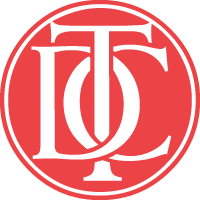Type Nouveau
by Deanne Cheuk
Approaching the art of typography as a graphic designer and illustrator, I am naturally drawn towards more decorative fonts and unique typography. Generally elaborate, one-of-a-kind, designed by hand and finished on the computer, I call this style ‘Type Nouveau’.
There seems to be a steady increase of young graphic designers that are also drawn to this style which has gained momentum over the years as a natural progression from straight digitally manipulated type.
Type Nouveau designs are a way to create unique project specific work and to give a project it’s own identity, particularly with custom designed titles in editorial and book design. Differentiated from logotype design, Type Nouveau designs may incorporate similar characters which are flourished individually specifically for each usage.
An example can be seen in the book Neighbourhood, [published in 2006 by Victionary] curated and designed by the design collective Rinzen. Neighbourhood features hand-created titles which work to support the look and feel of the book. The titles unite the images which are all different in theme and approach. The book is about a project in which a series of blank handmade toys were passed from artist to artist and gradually reworked and remade. Created by Craig Redman of the Rinzen collective, the typography is a custom cursive typeface which was painstakingly constructed specifically for each word or phrase. Used in the books introduction and title page and again to break up sections of the book with quotations from the participating artists, the type design is whimsical and contemporary and simultaneously reflects the handmade and accomplished level of design of the book.
“A couple of loose words and letters were initially sketched by hand but the bulk was produced, letter by letter in Freehand” says Redman. The whole font is primarily dependent on the ligatures, so most of the initial time was spent developing the variety that would be needed to join every combination of letters.
“Each letter reacts differently to the letter next to it, so an M and an O next to each other will be completely different to how an M and an E co-join. This meant that every word had to be created individually. Once the words were done, they were made into titles and quotes and then the individual flourishes where added” says Redman. An “excruciating” amount of time was spent on each title.
“I’m a complete sucker for precision vectors and smooth lines, hence the attraction of taking a loose, crafty style (ie. type made from thread) and turning it into a tight, snap-to-grid font while still attempting to retain the original feel. The Neighbourhood font still has all the trademarks of Rinzen type treatments, in that it is created from circles and squares and built on a grid system, but it also has individual touches to each letterform or flourish so each word is somewhat different from the next. I enjoy the cleanliness you can create by developing a font on computer rather than the inconsistencies the hand produces. Having said that, those inconsistencies can be amazing for particular projects, but the amount of typography that needed to be produced for the Neighbourhood book required a systemic approach.”
Commenting on the trend of Type Nouveau, Redman says, “I think it’s just a sign of the times more than anything. There has been a crafty movement in graphic design over the last couple of years, perhaps this is our way of interpreting old styles and techniques and turning it into something more modern.”

